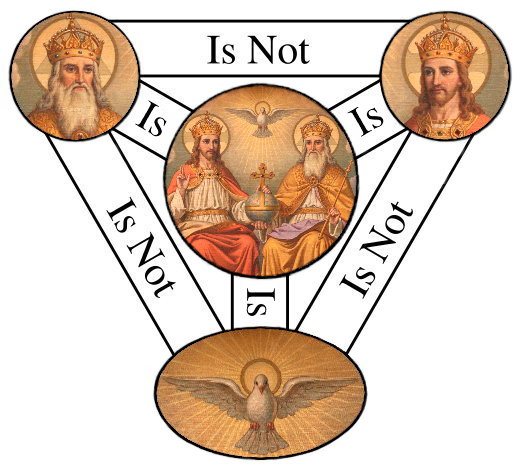
All the church groups represented in the Pastorate are Trinitarian, so, what does this mean?
First things first: there is only one God. Contrary to many critics of Trinitarians, we believe in one God, not three. There is one God, identified in three *persons: Father, son and Holy Spirit. So, just as a man might be a Father (have children), a son (has parents), and a Mechanic (his job); God is identified three ways. Each is a separate identity, but each is also a part of the whole. They do not overlap nor change: Jesus is not the Father, however the Holy Spirit is seen as being inside Jesus, and the Power that the Father utilises.
*the word person has a specific meaning in Trinitarian language
God the Father
Identified as the creator and father of all. He is the “person” we pray to.
Jesus the Son
Born of the virgin Mary, begotten not made. Jesus is God in human form. Filled with the Holy Spirit. Part of God but identified in time and space.
The Holy Spirit.
Has no corporeal form. Is the power of God manifested through Jesus, but also visible in the works of both the disciples and Old Testament prophets.
Each “person” is viewed as equal to the others with no hierarchy.
Traditionally the Trinity is seen as some sort of mystery, or enigma, but in reality such a structure is commonplace. Multi-tasking is understandable, such as in modern mobile phones, whereby it is not only a phone, but a diary, camera, internet interface etc, The idea that God can be, or do, three or more things should not be seen as unusual or fantastic. We identify parts of objects with individual names: a chair has legs, a seat and a back. Each has a function, is distinct, and identifiable so why not God?
Criticism of the Trinity
The main criticism is in the personage or nature of Jesus. The bible, especially the Gospels, portray Jesus as a man. He prays to God (the Father), and can be hurt and killed. He has all the limitations of a human and is identified as a man. So what? The Trinity states that Jesus is fully human (and fully God) because He is God in human form. However, many cannot see past the image of a man nor understand the dynamics of God in both human and non corporeal form, existing in time and space, while also existing in His eternal form without the limitations of a human being. Jesus has to behave and be perceived as fully human to accomplish His mission and be a viable role model for us mere humans. If He had been identified as God then His death would be meaningless, even impossible. On the flip side: if Jesus was only a man then our salvation is also from man and not from God. If Jesus was merely a human servant He becomes nothing more than a scapegoat, or a human sacrifice and God is divorced from Salvation, reliant on the obedience of a human rather than being the master of salvation Himself. If Jesus is not part of God then God has not sacrificed anything or been affected in any way by Christ’s death. The resurrection is more to do with conquering the fear of death than the miracle of bringing a human body (basically a biological machine) back to life. In truth, modern science can resurrect a dead body in some instances, although maybe not one who was treated the way Christ was.
There have been many attempts to visualise or analogise the Trinity. The three forms of water may illustrate a substance in three forms but a molecule can change form depending on the temperature, whereas, in the Trinity, the three separate “persons” are immutable and not interchangeable. The diagrammatical illustration above is simplistic and two dimensional. The multi-tasking illustration used above is probably the closest analogy but, the apps work independently of each other and rarely, if ever interact, and certainly do not have any commonality in terms of goals or focus. God, by definition remains beyond our comprehension, so the Trinity is more a means of spiritual focus than an attempt to define or even limit God.
